Softwash
By Reach-it
Looking to remove surface algae, mould, and other streak discolourations from your walls, roofs, window frames, tarmac, decking paths, drives, patios, and conservatories?
We can help!
All our Softwash professionals are Biocide and COSHH Trained and operate high-quality work practices for the treatment of exterior surfaces.
Harsh chemicals and power washing techniques are known to be damaging and fast becoming out-dated. Our aim is to give homeowners and businesses in North Wales a chances at increasing exterior appeal of their properties by employing the delicate, yet powerful approach of soft wash professionals.
Constant exposure to weather and the cocktail of atmospheric moulds, lichen, algae, and fungi, tend to leave buildings looking dull with discolourations, which if left untreated will compromise the structural integrity and crumble the building with time. Deep-running roots from these growths, for one, can deteriorate wall renders and heavy biofilms tend to weaken roof tiles.
Our soft washers make use of unique blends of environmentally friendly detergents, algae neutralizers, and surfactants to clean and restore home exteriors, and have had a consistent track record in the cleaning of modern Renders, Pebbledash Dry Dash, Vinyl Sidings, Concrete and Slate Roof tiles, Pavings, Deckings, and Tarmacs.
Before now, High-Pressure Power washing, also known as Jet washing, had been the prevalent method for exterior cleaning. The approach gives instantly visible results but not without serious shortcomings, which necessitated the quest for a safer, more efficient and effective means.
Jet washing leaves conditions for potential regrowth because it relies on high-pressure to dislodge biofilms, incapable of killing and completely eradicating the streaks. Also, spores displaced into the air during the process of pressure washing can settle later to restart growth, even spreading to surrounding surfaces. Furthermore, power washing can blast renders and flake-off paint, overall causing damage to the exteriors they are intended to make better.
We utilise simple chemistry to target dirt and biofilms, giving a much reliable result while leaving surfaces and surroundings undisturbed. The sophisticated germicidal and low-pressure Softwashing process kills and dislodges algae, moulds, moss, and fungi, leaving a super clean and heavily sanitised surface, deter of any sought of spores.
Our Biocide is government approved, environment-friendly, has neutral pH once dry and is biodegradable with a low environmental footprint, so the safety of your pets and children is assured to a large extent.
We are verified Biocide and COSHH (Control of Substances Hazardous to Health) Trained with experience in the unaggressive and longer lasting methods of cleaning algae, fungi, and lichen from all exterior surfaces.
***We do not recommend using industrial strength bleach (sodium hypochlorite) as cleaning agents. Use of such products is Illegal and does not give lasting results. ***
What is Softwash Solution?
Softwash Solution [UK HSE No 10003, IRL PCS No: 98068] is a high quality, Industrial Strength Biocide, suitable and fully licensed for the removal of streak discolourations from all hard exterior surfaces of buildings. It is a DDAC product with identical CAS Number as some of the best quality Biocides available on the Market, for example, AlgoClear Pro. Softwash Solution is, however, approximately 25% stronger, with the concentrate made up of up to 50% solution, as opposed to AlgoClear Pro’s 40%.
Softwash Solution has the extra cutting edge of IPA, and through trials has demonstrated the ability to enhance cleaning process for greater results in building stability.
How does Softwash Solution work?
Softwash Solution Biocide works by puncturing the walls of biofilms and destroying the organism down to their roots. The organisms are instantly washed off surfaces with a characteristic longevity of clean time and more value for money. It is important to note that; often, after treatment, the surface can take-up a reddish or greenish look. This is basically Softwash Solution doing its job. Biofilm cells components, upon puncture; basically bleed out, releasing beta-carotene and chlorophyll. However, in a short time, the colouration begins to lighten and eventually disappear.
How long will it last?
The Softwash Solutions Treatments offer greater longevity when compared to conventional high-pressure power washing or unlicensed, aggressive chemical treatments. Also, Maintenance Treatment Programmes could be set up for a long-term solution to keeping surfaces permanently clean.
How long does it take to work?
Cleaning time of Solution depends on the biofilm type and the biological load thereof, present on the surface under treatment. For example, the red biofilm of Trentepohlia may take up to one week, while green algae or Mildew can disappear in about a day. Black moulds of Aspergillus usually take longer, and although, growth would have been halted and organisms killed, residual staining may often require further treatments and rinsing.
Why Choose Reach-it:
- Fully Licensed and Insured Solution
- Verifiable Trained Applicators
- Safe to use on all External Hard Surfaces
- Longer Lasting Results
- 8 times stronger than off the shelf Biocides
- Fully Biodegradable
- Acid Free
- Bleach Free
Health & Safety and Regulation Compliance
- All Applicators are fully trained in the use of Softwash Solutions Pro Use Only Biocide in compliance with PCS & HSE Regulations
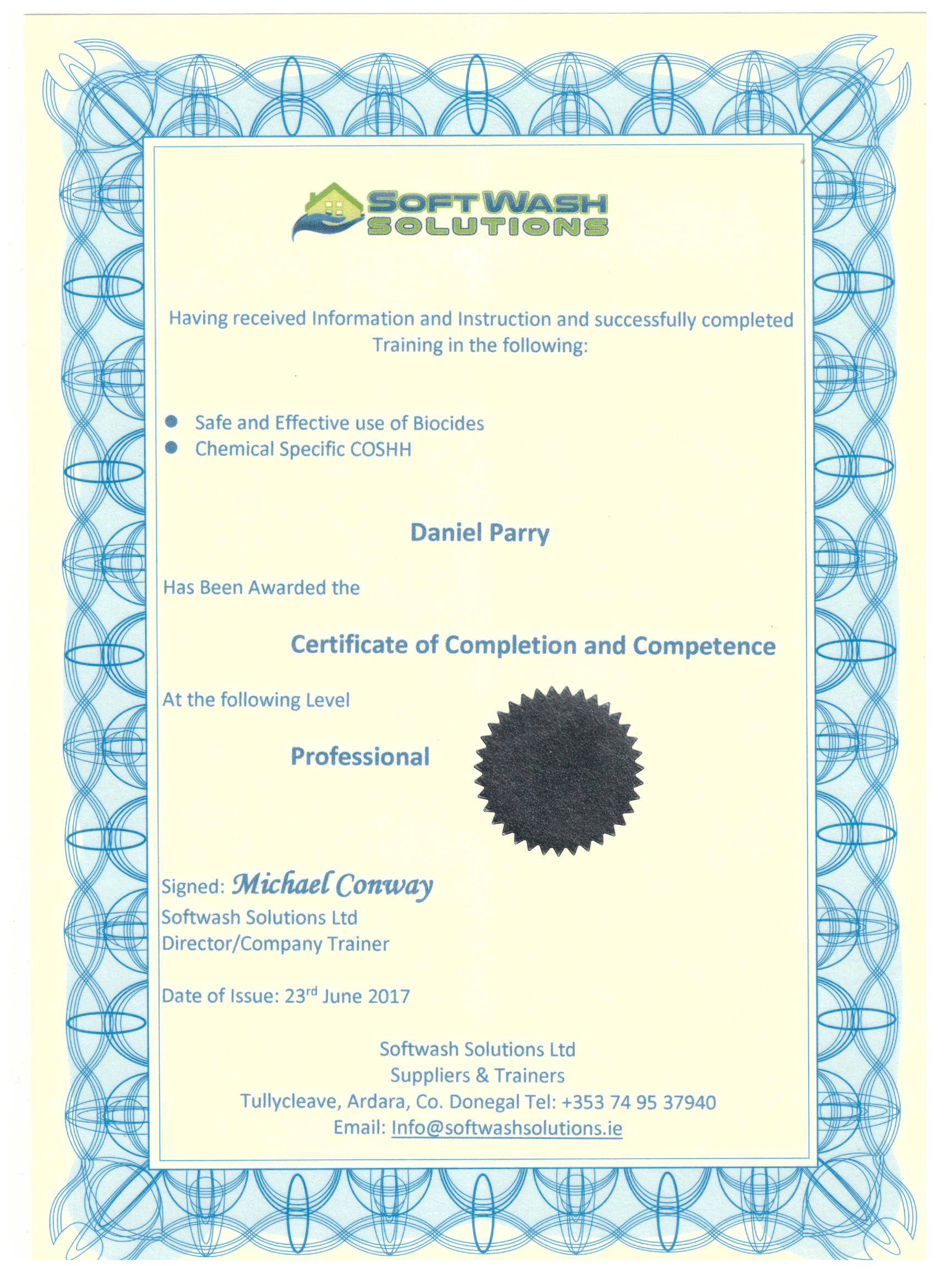
What is Biofilm?
A Biofilm is a film of microorganisms, comprising one or combinations of algae, mould, fungi, mildew, yeasts, and protozoa, growing on building surfaces and multiplying photosynthetically.
Because they flourish favourably on porous surfaces with some degree of dampness and sustaining minerals present, building exteriors and wall finishes tend to be vulnerable to biofilm colonisation.
On the outside, they taint the appearance of the surfaces they infect, reducing their water-repelling ability, and soon, through relentless metabolic activities and insidious growth, they begin to work their way inward to degrade the structural integrity of the parts affected.
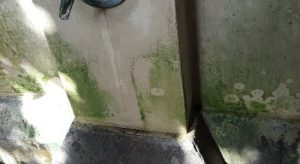
Green Algae (Cyanobacteria)
Algae and cyanobacteria are types of Phototropic microorganism, so named for their use of sunlight as an energy source. They form a dense mucous-like membrane as they multiply, eventually assuming a furry fibrous texture that covers surface areas completely. Even high quality masonry paints with anti-fungal properties can be colonised when environmental conditions prevail.
Phototropic microorganisms can be some of the most unsightly surface colonisers, expressing themselves in a gaudy bright green that is bound to clash with any building design or colour scheme. Their fine, fibrous quality clings fast to porous surfaces, making it very difficult to completely eradicate by means of power washing.
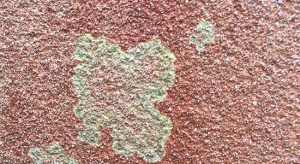
Red Algae
Red algae, or trentepohlia, can be some of the toughest to remove. If left untreated it forms a robust layer of biofilm against which power washing is futile.
One DIY solution is to attack it with bleach, but whatever positive results this may appear to achieve, they are only temporary; the ominous red stain reappears after a relatively short period of time. Furthermore, this method is almost guaranteed to damage or stain the surface due to the highly corrosive nature of the bleach. Pets, children, the environment and the Applicator are also put at risk for the same reason.
The red algae itself is adaptable and undiscriminating, being known to affect pebble dash, render, brick, paint, wood, stone and other surfaces. The species favours temperate climates with plenty of rain and high humidity, earning it a notorious reputation in areas like the west of Ireland where it has affected thousands of buildings along the coast. As air purity improves due to environmental reforms, the algae is now moving inland towards many landlocked counties.
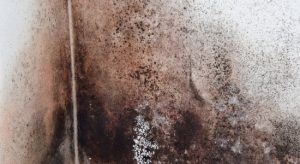
Black Fungi/Mould
Unsightly black staining is usually caused by chemoorganotrophic fungi. These fungi favour stone surfaces and can be found mainly on roofs, pebble dash, pavements and render walls. Like all fungi, they grow through the downward extension of root-like hyphae that form sub-surface networks called mycelium. This process can undermine the surfaces physical composition. The consequent decay can cause longterm damage to buildings. By releasing dark pigment (melanin) the fungi deteriorates the surfaces appearance.
Fungi are fast-growing organisms that spread by the release of spores into the atmosphere, making power washing a particularly misguided solution to the problem; in fact, it often helps them to spread!

Moss
Mosses are types non-vascular plant in the botanical classification Bryophyta. Being thirsty photosynthetic organisms that love moisture and need sunlight, mosses are commonly found on roofs.
Once establishing a colony on any rooftop, moss can wreak havoc in a number of ways. If it’s left to multiply, sufficient volume of moss can push and dislodge roof tiles as it expands and grows. Weather can cause it to break off and roll into gutters and block them. It also absorbs rain water and atmospheric moisture, becoming heavy and putting downward pressure on its host structure. Moss can also serve as a vehicle for capillary action, carrying water up and under fixings and tiles and accelerating water erosion.
As well as all this structural damage, moss is also extremely ugly. Over time it can thicken to such a degree that it can even change a buildings shape!
There are over 14,000 know species of moss, but a few most common to the British Isles are:
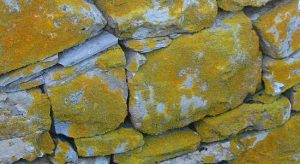
Lichen
Lichen is a composite entity comprised of two or more symbiotically related organisms, one of them invariably a fungus, the other often an algae. Lichens are identifiable by their flakey grey/green/yellow colour and the lesion-like splotches into which they form.
The fungus creates a crust , or thallus, that houses the alga, which in turn feeds itself and the fungus through photosynthesis. The fungal member of the partnership cannot survive without the alga. Algae can damage the substrate with the release of acids.
